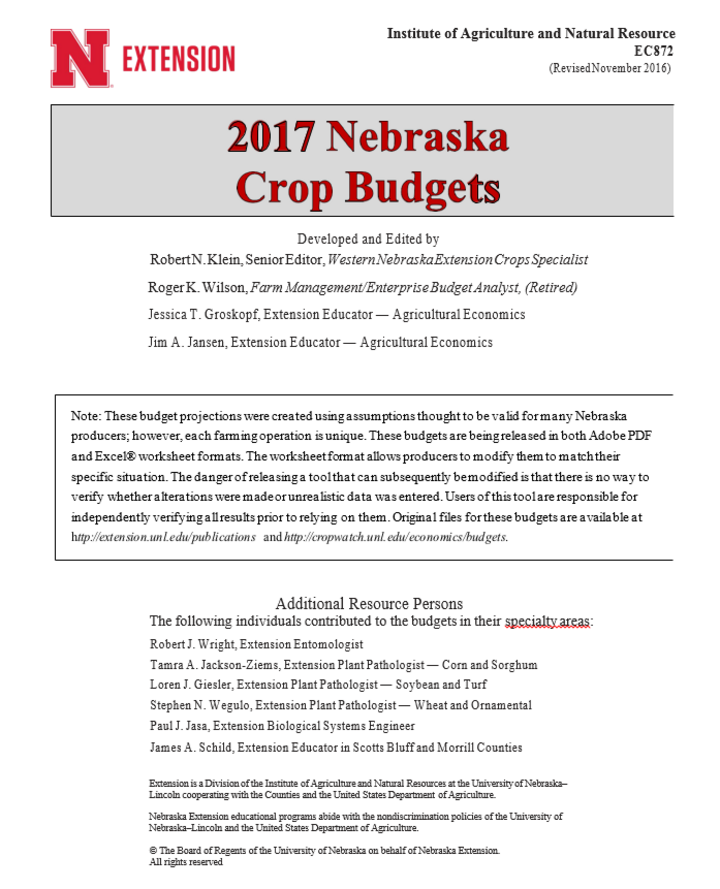This article is part of a Nebraska Extension initiative on Strengthening Nebraska's Agricultural Economy. Find more articles for agricultural producers here and on Twitter at #StrongNebAg.
With the challenges of today's agricultural economy, the Nebraska Extension Crop Budgets can be a valuable tool in identifying and focusing on specific areas of crop production costs.
Farmers can compare their costs to those in the budgets to identify major variances. For areas where their costs are much higher than those in the budgets, they will want to examine the reason for the differences and whether changes can be made to get those costs more in line with the budget costs.
The 2017 crop budgets are now available online at CropWatch.unl.edu/budgets. They include

The Nebraska Crop Budgets tend to reflect the average of the one-third low-cost producers for a given crop.
Many input costs used in the 2017 budgets are about the same as those in 2016; however, be sure to check all prices as some may have major changes. The greatest change is in fertilizer prices; some prices dropped 15% to 35%. Anhydrous ammonia showed a major price decrease.
Comparing These Budgets and Nebraska Farm Business Reports
In examining production costs and returns reported in the 2015 Nebraska Farm Business Inc. report for irrigated soybeans, one budget shows the total cost per bushel for the one-third low-cost producers at $9.81 per bushel as compared to the high one-third at $17.56 per bushel.
Since there was less than a three-bushel difference in yield between the low one-third and high one-third groups in cost of production per bushel, the difference in cost per bushel is primarily the costs of the inputs.
Among the Nebraska Farm Business Inc. producers, three main items made up most of the difference in cost of production from the low one-third to the high one-third:
- Fertilizer cost per acre varied from $16.47 for the low-cost producer to $67.21 for the high-cost producer. The cost to replace the phosphorus for 60-bushel soybeans is about $18 per acre. The benefits of soybeans in a corn/soybean rotation are about $63 per acre with current fertilizer prices.
- Machinery costs per acre ranged from $59.44 for the low-cost producer to $141.93 for the high-cost producer. To reduce this cost consider doing custom work or sharing equipment with a neighbor.
- Hired labor costs per acre ranged from $10.46 for the low-cost producer to $59.42 for the high-cost producer. Those making a higher investment in machinery should have a lower cost here. Again, to lower costs is doing custom work a possibility?
Each budget of the Nebraska Crop Budgets is available online in a PDF format or an editable Excel format that can be customized to reflect your farm costs or to test and compare the effects of changing a practice or input.
